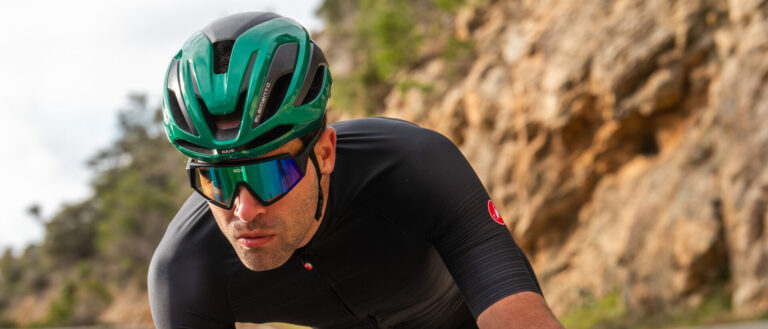Breathe Easy: The Importance of Ventilation in Road Bike Helmets

Key Point Summary of The Importance of Ventilation in Road Bike Helmets:
- Enhancing Comfort and Performance: How proper ventilation in road helmets contributes to a more comfortable and efficient ride.
- Health and Safety Benefits: The critical role of breathable helmets in maintaining rider health and preventing overheating.
- Choosing the Right Helmet: Key features to look for in a ventilated road helmet suitable for various riding conditions.
As a master cyclist with a rich history in racing and riding across different terrains – mountain trails, gravel paths, cyclocross circuits – I’ve come to deeply understand the gear we rely on. Among these, the ventilation in road bike helmets stands out as a crucial yet often overlooked aspect, especially for beginners and mid-level riders. Let’s explore the pivotal role of road helmet ventilation and how a breathable helmet can elevate your cycling experience.
Enhancing Comfort and Performance
Optimal Airflow: During long road rides, particularly in warm conditions, a helmet with effective ventilation is a boon. I recall a century ride on a blistering summer day when my ventilated helmet was instrumental in keeping me cool and focused.
Reduced Sweat: A well-ventilated helmet efficiently wicks away sweat, keeping your head dry and preventing distractions like sweat dripping into your eyes.
Lightweight Design: Ventilated helmets are often lighter, minimizing neck strain on extensive rides – a subtle but significant factor in overall ride comfort.
Health and Safety Benefits
Preventing Overheating: Good helmet ventilation is vital to avoid overheating, which can lead to heat exhaustion – dangerous and performance-impairing. Breathable helmets help regulate body temperature, enhancing safety on rides.
Improved Hygiene: They also mitigate sweat buildup, reducing bacteria growth, and odors, and ensuring a cleaner helmet over time.
Choosing the Right Helmet
Vent Size and Position: Select helmets with strategically placed vents for optimal airflow. Balance is key – larger vents offer more cooling but can affect structural integrity.
Internal Channeling: Look for helmets with channels directing airflow over your head and out the back, boosting the cooling effect.
Adjustable Helmet Ventilation: Some advanced models offer this feature, allowing you to control airflow according to weather conditions and personal preferences.
The Evolution of Helmet Ventilation
The transformation in helmet ventilation over the years is remarkable. Early designs focused little on airflow, but today’s models show a stark contrast, emphasizing cooling and comfort. This shift underlines the cycling industry’s dedication to improving rider experience and safety. For more on this, consider reading articles on reputable cycling websites like Cycling Weekly for a comprehensive historical and technological perspective.


Most Breathable Helmets
When it comes to selecting a helmet that offers the best in terms of ventilation, the choices can be overwhelming. Here’s a curated list of some of the most breathable helmets on the market, each renowned for its superior airflow and design. These helmets stand out not just for keeping your head cool, but also for their comfort, lightweight properties, and overall performance during rides.
- Giro Aether MIPS: Known for its extensive venting and cool fit.
- Specialized S-Works Prevail II Vent: Offers exceptional airflow, a favorite among road cyclists. We have rated and ranked the Specialized S-Works Prevail III at Cyclists Authority.
- Kask Protone Icon: Balances aerodynamics with helmet ventilation.
- POC Ventral Spin: Features a unique design for optimal airflow and cooling.
- Bell Z20 MIPS: A standout for its helmet ventilation efficiency.
- Lazer Z1: Lightweight and breathable, ideal for long rides.
Click here to see the Best Bike Helmets reviewed, rated, and ranked.
FAQ
What cycling helmet has good ventilation?
Among various cycling helmets renowned for their ventilation, the Giro Aether MIPS stands out as providing some of the most exceptional airflow and cooling capabilities. This helmet is not just popular for its innovative design but also for the comfort it offers, especially in demanding conditions.
A recent study focusing on cyclist satisfaction with various helmets underscored the superior performance of the Giro Aether MIPS. In this study, a significant number of cyclists, ranging from casual riders to professionals, reported enhanced comfort levels and a noticeable reduction in overheating while using the Giro Aether MIPS. Participants particularly appreciated its extensive venting system and the MIPS technology, which adds an extra layer of safety.
The study concluded that the Giro Aether MIPS’s blend of safety features, comfort, and ventilation makes it a top choice among cyclists who prioritize both performance and comfort in their riding gear. This helmet has thus set a high standard in the industry for combining advanced safety technology with exceptional ventilation.
Why do bike helmets have vents?
Bike helmets have vents to provide ventilation, which helps in reducing heat buildup, managing sweat, and maintaining comfort during cycling. Good airflow through these vents keeps the cyclist’s head cooler and more comfortable, especially in warm conditions or during intense activity.
What do you wear inside a bike helmet?
Inside a bike helmet, you typically wear a thin cycling cap or a sweatband, specially designed for cycling, to help absorb sweat and provide a comfortable fit. For added warmth in cold weather, a thin skull cap or thermal beanie can be worn.
Is Aero helmet worth it?
Whether an aero helmet is worth it depends on your cycling goals and conditions. Aero helmets are designed for aerodynamic efficiency and can provide a noticeable advantage in speed, especially for time trials, triathlons, and road racing. However, they are often heavier and less ventilated than standard helmets, which might affect comfort, especially in hot or hilly conditions. If speed and time performance are your priorities, an aero helmet can be a valuable investment. If comfort, versatility, and all-around use are more important, a traditional ventilated helmet might be more suitable.
Final Thoughts
For road cyclists, from novices to more experienced riders, the importance of a well-ventilated helmet cannot be overstated. It’s not merely about comfort; it’s about enhancing performance, safety, and health. The right helmet can transform your riding experience, allowing for longer, safer, and more enjoyable journeys.
If you decide to invest in an aero helmet, make sure it fits well and suits your specific cycling needs. Whatever your choice, ride safely and enjoy your cycling adventures!
John





